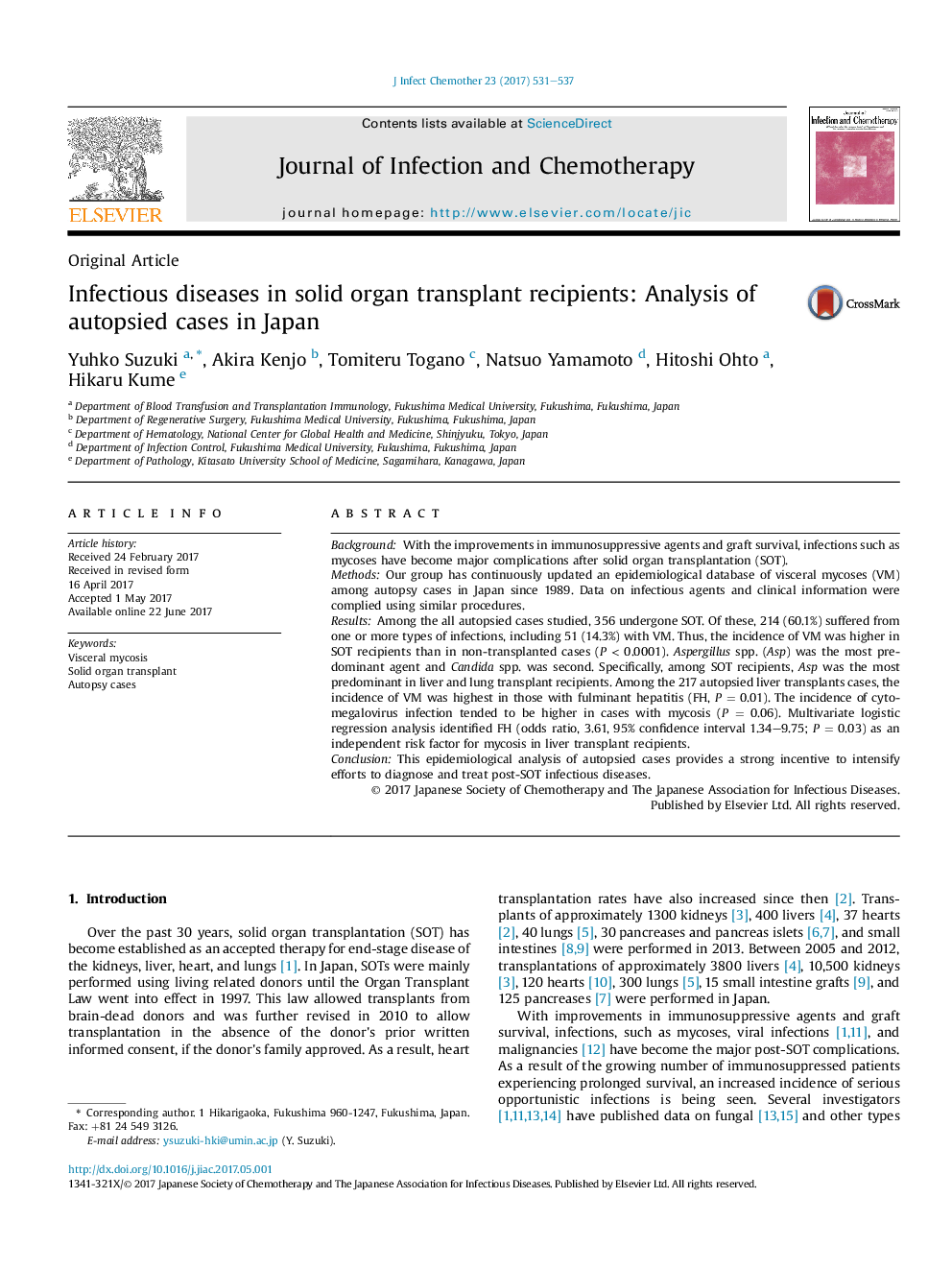| Article ID | Journal | Published Year | Pages | File Type |
|---|---|---|---|---|
| 5668871 | Journal of Infection and Chemotherapy | 2017 | 7 Pages |
BackgroundWith the improvements in immunosuppressive agents and graft survival, infections such as mycoses have become major complications after solid organ transplantation (SOT).MethodsOur group has continuously updated an epidemiological database of visceral mycoses (VM) among autopsy cases in Japan since 1989. Data on infectious agents and clinical information were complied using similar procedures.ResultsAmong the all autopsied cases studied, 356 undergone SOT. Of these, 214 (60.1%) suffered from one or more types of infections, including 51 (14.3%) with VM. Thus, the incidence of VM was higher in SOT recipients than in non-transplanted cases (PÂ <Â 0.0001). Aspergillus spp. (Asp) was the most predominant agent and Candida spp. was second. Specifically, among SOT recipients, Asp was the most predominant in liver and lung transplant recipients. Among the 217 autopsied liver transplants cases, the incidence of VM was highest in those with fulminant hepatitis (FH, PÂ =Â 0.01). The incidence of cytomegalovirus infection tended to be higher in cases with mycosis (PÂ =Â 0.06). Multivariate logistic regression analysis identified FH (odds ratio, 3.61, 95% confidence interval 1.34-9.75; PÂ =Â 0.03) as an independent risk factor for mycosis in liver transplant recipients.ConclusionThis epidemiological analysis of autopsied cases provides a strong incentive to intensify efforts to diagnose and treat post-SOT infectious diseases.
